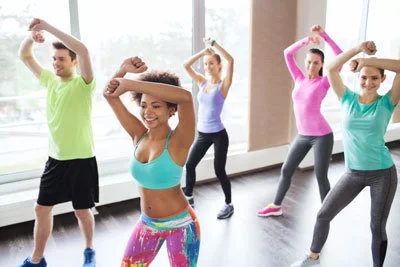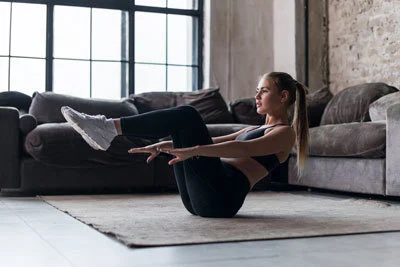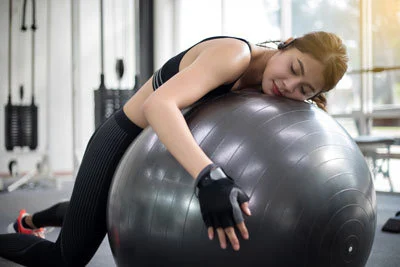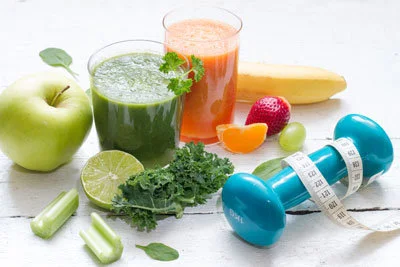Get into Fitness. Why ? How? 'Or' What ?
What exactly is Fitness? Le Larousse defines this term as a "set of fitness activities including bodybuilding, stretching and cardio training". These days you see it everywhere: from CrossFit® to the gym, from the beaches of Los Angeles to the Swedish Gym. This sport - of American origin - has continued to evolve and diversify to meet more and more expectations from novices, each day more numerous to "get into fitness", like initiates.
The variety is such that there is something to get lost in. Especially when you decide to "get started". This is why the #TeamStimium experts have developed this Fitness Guide to help you see more clearly and make the right choices.
The importance of Fitness, from the sedentary to the seasoned athlete
1) The origins of Fitness

|
|
Add caption |
Fitness, created at the end of the 60s by the American doctor and lieutenant-colonel Kenneth Cooper, had the original objective of shaping the body and keeping in shape. Her work, “Aerobic”, laid the foundations of the discipline which was then popularized by Jane Fonda through “Work Out”, her television program during the 70s. Ten years later, in France, Véronique and Davina popularize this new sport with Gym Tonic every Sunday morning on television.
With the evolution of Fitness, Aerobics has become one of the disciplines of this sport whose primary objectives remain:
- Losing weight
- Refine the silhouette and draw the muscles
- Improve your cardiovascular condition
- Gain flexibility
The clientele of sports halls, which remains predominantly female (60%), continues to grow: more and more of us are “getting into fitness”. It is also becoming common nowadays to meet at the Bike class (editor's note: indoor bike lessons in a specialized studio) at 7:30 am rather than at the Happy Hour at the local bar.
Since 2010, bodybuilding has experienced a real boom in France, with a significant increase in the number of sports halls and a diversification of the activities offered there. These weight rooms, which were originally intended for male customers, have adapted to female customers who no longer hesitate to come and lift cast iron.
Another demonstration of the enthusiasm for the discipline is the Salon du Body Fitness. This “meeting of fitness enthusiasts” brings together each year, in Paris, professionals and amateurs of Fitness around the latest innovations via exhibitors, conferences, demonstrations and conventions in which everyone can participate.
2) Fitness, an ideal complement to all sports
Over the course of its development, fitness has gone beyond the scope of its original objectives, reaching at the same time an increasingly large audience. It is now aimed at all types of
sports and is displayed as an ideal complementary activity for the marathoner, the cyclist or the footballer.
When we talk about Fitness, we encompass different practices that can range from Yoga to Body Combat. A diversity which is an undeniable advantage for the member of a sports hall.
Indeed, the marathon runner can practice Pilates to strengthen her transverse (editor's note: the deep abdominal muscles that keep the organs in place) and, thus, improve her posture when running and optimize her performance. The cyclist can vary his physical activity by practicing more fun and dance classes such as Zumba or Step. The footballer can practice LesMills classes such as the Body Pump to strengthen his musculature, without being a bodybuilder and thus keeping his explosiveness. Access to devices and open spaces allows tennis players to perform dynamic work in plyometrics and have a better quality of movement.
Made up of simple movements, exercises that can be practiced at the pace of your choice, fitness is a universal sport par excellence, aimed at all ages, at all levels and for both women and men.
3) The advantages of the gym
Be inside
If you don't live in the South of France, your long outings seem twice as difficult in winter. Running in the Bois de Boulogne is, of course, nicer than on a treadmill, but the advantage of the latter is that it is always warm, well maintained and, if it tires you, you always have the solution. go take a cardio class to vary the sensations.
Follow-up
Although some rooms offer a service with videos and guided devices only, the majority of fitness rooms have qualified sports coaches (compulsory in France). With the eye of an expert, you can surpass yourself whatever your goal: losing weight, improving your endurance or building muscle.
Socialize
Unlike a pool session, it is rare to not speak to anyone during a fitness class. It is also nice to meet up with colleagues before or after work. The group effect strengthens motivation. It is less easy to give up the TRX class where we meet a group of friends on Wednesday evenings than the swimming sessions done alone after work ...
The variety
This is one of the major advantages of the discipline. Weight training and cardio training area, stretching, choreographed lessons, aqua-bike, Crossfit, New Zealand concepts LesMills, etc. Each year, the range of fitness room proposals is enriched with new programs to help you achieve your goals, for all levels.
It is therefore not a question of categorizing Fitness as an activity apart from your favorite sport but as a perfect complement. Whether it is to strengthen certain aspects of your preparation or, quite simply, to vary the pleasures, you can find what you are looking for in the wide range of exercises that fitness encompasses.
4) Sedentary, Fitness is for you
WHO recommends regular physical activity based on age.1 If you feel you are too sedentary and are looking for an activity that does not require too much technical training and that you can do at your own pace, the fitness is an ideal solution.
How to get into Fitness? Overview.
France has become in recent years the third largest European market for the fitness industry behind England and Germany. It is therefore natural that the offers offered to the French continue to increase and diversify. What are the trends? What is the right choice to make according to your wishes, objectives and financial means? Decryption by # TEAMSTIMIUM…
1) "Classic" fitness rooms
By "classic fitness rooms", we mean sports halls which offer group lessons and a weight training area.
The weight training area is, most of the time, supervised by a qualified sports coach. Its presence is included in the price of the subscription. If you want personalized sessions, these are usually paid extra.
Regarding group lessons, these vary according to the rooms and the coaches. The emblematic “abs-glutes” and “TBC” (Total Body Conditioning) classes are gradually being replaced by new concepts.
The world leader in these concepts is the LesMills brand, in tribute to Leslie Mills, father of founder Philip Mills and former top athlete for New Zealand.
FOCUS: LESMILLS
LesMills Concepts consists of pre-choreographed and identical lessons all over the world. A new choreography is offered every three months with "launch parties", which allows you to progress at your own pace, knowing more or less what to expect before the start of the course. Strengthening with a bar, cardio inspired by combat sports, indoor cycling or even dancing: LesMills offers almost every type of activity possible indoors. For more information, do not hesitate to take a look at the different offers and programs on their website.
FOCUS: FREESTYLE
Although less and less present in today's gyms, “freestyle” is one of the origins of fitness. Behind this term are Step cardio and Aerobic classes. The reference venues in Paris are Forest Hill and the CMG Sports Club. These classes can be very intensive at the cardio level and use your memorization and coordination skills.
2) Specialized rooms, or "studio"
The first rooms that were qualified as "studios" were rooms specializing in either Yoga or Pilates (sometimes both).
YOGA
Yoga can be practiced alone or in a group. Its benefits for body and mind are recognized around the world and the original discipline is called Hatha Yoga. There are 8 major disciplines of yoga.
Hatha Yoga
A session is made up of different postures linked together and associated with breathing exercises, the aim is to improve flexibility, strengthen joints and better manage stress.
Ashtanga Yoga
Based on 8 principles: mastery of the senses, meditation, concentration, ecstasy, others, letting go, calm in the posture and work on breathing. This method is very dynamic and is based on six sets of postures.
Vinyasa Yoga
It allows you to tone and sculpt your silhouette through dynamic and fluid sequences guided by breathing. Coming from Ashtanga Yoga, the pace is more sustained and allows you to exercise and sweat at each session.
Iyengar Yoga
A modern variant of Yoga, accessories are used to make it accessible to all and thus modify the difficulty according to the level of the practitioner.
Yin Yoga
The postures are maintained longer, we work in depth and we promote letting go by the silence that reigns during the session. It is often used as a supplement to other sports because it helps improve flexibility and strengthen connective tissue.
Yoga Nidra
Each session begins with the practitioner speaking his sankalpa: an affirmation of the quality he would like to develop. We then focus on visualization and many breathing exercises.
Bikram Yoga
This form of Yoga is practiced in a humid room heated to 40 ° C. There are intense postures of short duration. This helps eliminate toxins by oxygenating the blood and improves cardiac performance.
PILATES
Pilates, named after its founder Joseph Pilates, is a physical practice suitable for beginners and experienced alike to improve concentration, flexibility and sheathing. Like Yoga, Pilates can be practiced alone, using a machine called a Reformer, or in a group, in this case we will call it Mat Pilates because the session is performed on a mat. In both cases, Pilates is based on 6 fundamental principles:
Centering
We call "the energy center of the body" the abdominal strap, from the pubis to the ribs. The practitioner should pay attention to this throughout the session.
Concentration
In Pilates, the most important thing is performing the exercises. We prioritize quality over quantity and this requires permanent concentration.
The fluidity
Like a dancer, Pilates practitioners seek grace and fluidity in their movements for the sake of quality of execution.
The precision
The movements are carried out in a precise and meticulous manner in order to have an optimal result on the practitioner's bodybuilding.
Control
Each exercise offers different levels of difficulty. The goal is not therefore to try to take the hardest option if you do not fully master the previous ones. You have to be able to control your body perfectly during the entire movement to validate it.
Breathing
Breathing guides movement, you have to find harmony between breathing and performance in order to work effectively.
FOCUS: REFORM PILATES
We call Reformer, or Cadillac, the “machine” that is used in Pilates in some sessions. The Reformer allows you to mobilize the whole body permanently by influencing a continuous resistance. This machine is equipped with springs to reduce injury and most exercises are performed in a horizontal position.
BIKE STUDIOS
There are more and more of them. In Paris, they are called Dynamo, or KiWill for the most famous. Here, the principle is simple: get on an indoor bike and pedal! But that is if you are home alone. In these specialized studios, the bike takes on another dimension. The coach makes you experience a sports session that compares to a real sports trip with friends! Atmosphere, music, advice, follow-up ... Nothing is left to chance! Even the bottle of water that goes well, the towel and cycling shoes, but also a variety of small creams and post-workout treatments. We feel good there! Count between 30 and 40 € for a session.
THE BOOTCAMP STUDIOS
The latest novelty in the world of fitness.
Directly inspired by the United States, these studios bring together several activities based on HIIT (High Intensity Interval Training). That is, you perform several exercises at an intense pace over a short period of time. The point is to "shock" your body and to suggest new exercises at each session! You can find both cardio training and muscle building in the same workout. We never tire ! Functional movements, running thanks to the latest innovative AirRunner treadmills, exercises with Kettlebells… The possibilities for sequences are almost endless. If that tempts you, you can try out studios like Episod, Midtown, and Cluster in Paris. Like the bike studios, a quality service generally accompanies the service and it costs between 30 and 40 € per session.
3) practice fitness at home
And yes, if you do not have a gym nearby, do not like sports with others or you prefer to choose the economical solution, it is possible to do Fitness at home!
You can find a wide choice of accessories to vary your sessions on e-commerce sites or in sports stores. If you don't know where to start and how to stay creative in your workouts, some TV shows are specialized to get you moving at home, the most famous being Gym Direct on Direct 8. For the most connected among us, head to your smartphone. to download apps like Results, Freelectics or Nike Training Club. A real follow-up can now be carried out and you can progress at your own pace and according to your objectives, without leaving your home! Be careful, however, to listen to the instructions carefully and, if possible, to do your sessions in front of a mirror to be sure to perform the movements correctly. Without a coach to correct you, the injury can quickly happen!
4) Trends to surpass yourself: CrossFit, Spartan Race, Mudd Day ...
CrossFit
Technically, CrossFit was founded in 2000, but we can trace the origins there much earlier when its founder, gymnast Greg Glassman, began using bars and dumbbells to improve performance. A competitor by nature, Glassman decided not to become stronger than in gymnastics, but in all the sports he undertook: cycling, running, weight training ...
Having become popular on our side of the Atlantic at the start of the decade, CrossFit and its "boxes" are growing all over France, also thanks to the major support of its sponsor Reebok.
To put it simply, each session will be organized around a WOD (understand Workout Of the Day). This is offered by the session coach to adapt it to practitioners, by the room manager, or by the CrossFit website which displays a different WOD to perform each day. Each WOD can be done in AMRAP (As Many Reps As Possible = as many repetitions as possible during a given time), or in the form of a circuit of exercises to be performed as quickly as possible (be careful to perform each repetition well so that it ci is "validated").
Crossfit quickly became popular for its effectiveness. We progress quickly and we always want to do more reps or go faster than in the previous session! The transformations on the body, which becomes more "fit" and sculpted, are only the consequence but not the main objective of your training.
The other benefit of CrossFit is the strength of its community. Entering a CrossFit box means joining a family, a bunch of friends who encourage each other without judging each other and who push each other to achieve their goals. For the more motivated, it's a participation in the CrossFit Games to try to become the next "Fittest Man on Earth" like Rich Froning Jr!
A little advice from the Stimium team before going to a Crossfit box, take a look at this lexicon offered by the #TEAMSTIMIUM so as not to be completely lost. CrossFit is a family, but also a language apart!
Spartan Race
Take the time to sleep (well)
The debate about how to be healthy often revolves around diet and physical activity. We hear the famous “eat-move” in advertising campaigns every day, but it’s not that simple and effective. Sometimes the “eat better / move more” combination is not possible. And this, for good reason: between your work, your social life and your workouts, you don't take time to sleep. Too few people realize the true importance of sleep ...
Our advice: try to get at least 6.30 hours of sleep per night. To avoid wasting precious minutes unnecessarily, avoid using electronic devices (phone, tablet, or computer) 30 minutes before bed to keep your brain from being over-excited by screens. Plan what time you want to wake up the next morning and go to bed based on that. This will allow you to control your sleep and make sure you always get enough rest.
Fitness: mistakes not to make
We are there, you have made your resolution and you are going to embark on your new adventure: Fitness. Whatever solution you have chosen: Fitness room, Crossfit box, Freeletics program ... To support you and give you the best possible start, the #TEAMSTIMIUM has listed a few mistakes not to make.
1) Want to do everything
This is the problem many beginners have when starting a program in the gym. The abundance of choice of group lessons, maximum motivation, a desire for immediate results, etc. There is a great desire to want to touch everything. But this enthusiasm tends to fade quickly. Generally allow 3 weeks… Because most of the new registrants to the fitness room give up before the end of the first month!
Our advice: start slowly but surely. Don't overload yourself with too many sessions. 2 to 3 sessions per week the first month is more than enough, especially if you did not practice any sport before. Choose activities that appeal to you, don't force yourself to do Body Combat because “it burns calories” if you can't stand martial arts! Vary the sessions; try Zumba, RPM, Step. Take advantage of the choice available to you, knowing that, unlike the Sunday brunch buffet, you are strongly advised to refill yourself if you liked it!
2) compare yourself to others
When you enter the gym, it's tempting to want to compare yourself to others. But the only thing that matters is your body and your well-being. Everyone evolves differently and just because your colleague comes only once a week, eats chocolate all afternoon and has the body you dream of does not mean that you will get the same result by following his lifestyle. Our advice: compare yourself… with yourself! Knowing that, for this, the scale is not the best interlocutor.
To really see how you are doing, take a photo of yourself every month (same framing, same position, same lighting) and observe the changes as you go. It is also interesting to realize how you are feeling. Indeed, some results may take time to arrive visually but are present physically: more energy on a daily basis, better sleep, a better regulated appetite… It is important to note these changes and how they evolve in order to to realize that your body is changing for the better!
3) The importance of sleep
Even with the best workout routine and a square diet, if you don't sleep well, you can't achieve good results.
4) be too drastic about your nutrition
When you start fitness, you hear a lot about protein. We should eat a lot! ANSES recommends a minimum of 0.8g of protein per kilogram of body weight per day2, or 56g for a 70kg individual. See the very comprehensive article by Sport Medecin Jean-Jacques Menuet to learn more about protein intake in athletes.
A point on calories
According to ANSES, the recommended intake is on average 2,400 to 2,600 calories per day for an adult man and 1,800 to 2,200 for a woman depending on her height, weight and activity level. Physical.4 To lose weight, it is “enough” to absorb fewer calories than you need. But weight shouldn't be your only goal. What matters is above all your feelings and your visual. Don't forget that muscle is heavier than fat (note: muscle takes up half the space of fat). If you want to build muscle mass, there is no need to focus on your weight.
Of course, your calorie intake should be regular and in line with your physical activity, but they should not control your life. Eat regularly, 4 to 5 times a day, avoiding too large portions which can lead to digestion problems and cause significant fatigue. Favor unprocessed products by cooking your own dishes if possible. Pay attention to sugar without depriving yourself completely.
What about the supplements?
Food supplements can help you before, during and after exercise. Depending on their composition, they can help you manage your recovery, give you a boost during exercise, tone you up, help you control your weight, or even help you maintain your joint flexibility. See dietary supplements as a workout companion, not a solution to your problems. They are there to support you in your sports practice. These supplements must be in line with your physical activity and your needs but must not replace a balanced and varied diet and a healthy lifestyle.
















